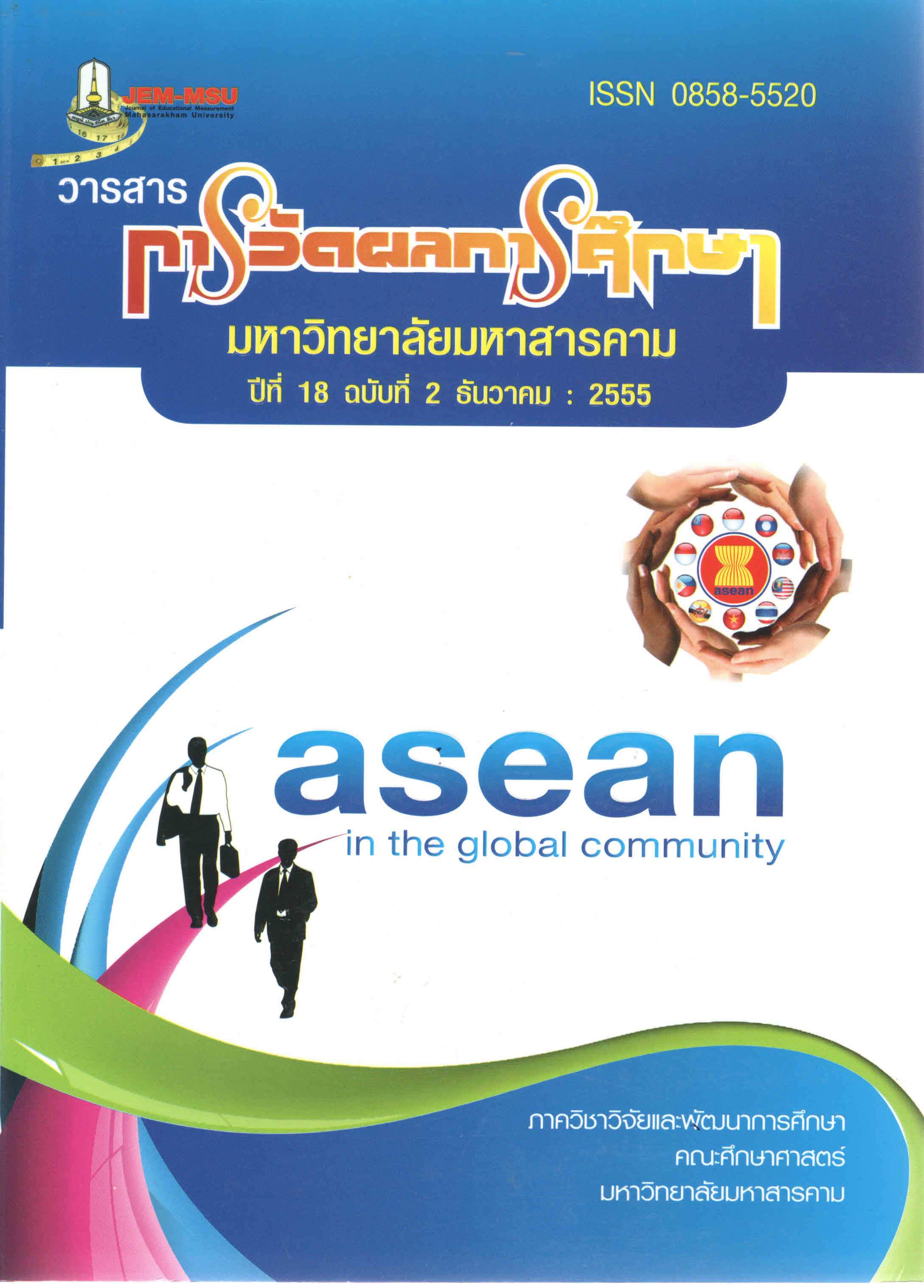Multilevel Confirmatory factor analysisof Self-management ability Model of all Students in Grade 2 in Yasothon provinces and Srisaket provinces : Multiple Group Analysis
Main Article Content
Abstract
Self-management ability their students are important and necessary for
individuals to be used in the development of life and learning, working effectively and
are happy to help a person become a complete person. The purposes of this study
were 1) to develop and validateof Self-Management Abilityfactor Model of all student
in Grade 2 School in Yasothon province and Srisaketprovinces with empirical data.
2) to examine the invariance of self-management ability factor model of all student in
Grade 2 according to sex , size of school ,and school group.
The sample consisted of 2,840 Mathayomsueksa (grade) 2 students in 70
public schools in Yasothon provinces and Srisaket provinces in the second semester of
the academic year 2011,with 1,190 of males and 1,650 of females, obtained using the
Multi stage Random Sampling technique. The instruments used in the study was selfmanagement ability questionnaire with 5-rating scale and its reliability value of .917
Multilevel Confirmatory Factor Analysis (MCFA) and Multiple Group Analysis. Major
findings were summarized as follows:
1. The develop and validateof Self-Management Abilityfactor Model of all
student in Grade 2 School in Yasothon province and Srisaket provinces was fit with the
empirical data. χ 2 = 82.766, df =70, p-value =0.141, CFI = 0.997, TLI = 0.995, RMSEA =
0.008, SRMR Within = 0.009, SRMR Between = 0.096 และ คา χ 2 /df= 1.182. The set of
variable predicting at the students and classroom levels could explain variance of
within level 31.50, 58.40, 99.60 and 90.30 and the coefficient of determination between
level 71.20 ,75.10,95.60 and 99.90
2. the model was invariant in form but varying the parameters between
students to different groups of sex and size of school and school group.
Article Details
The content and information contained in the published article in the Journal of Educational Measurement Mahasarakham University represent the opinions and responsibilities of the authors directly. The editorial board of the journal is not necessarily in agreement with or responsible for any of the content.
The articles, data, content, images, etc. that have been published in the Journal of Educational Measurement Mahasarakham University are copyrighted by the journal. If any individual or organization wishes to reproduce or perform any actions involving the entirety or any part of the content, they must obtain written permission from the Journal of Educational Measurement Mahasarakham University.


